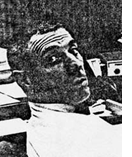
Joe enlisted in the Army Air Corps in 1942 and graduated from pilot training in March 1944 at Douglas, Arizona. He transitioned to B-24s at March Field in Riverside, California, then briefly at Hickam Field, Hawaii, before going to the combat zone on Saipan and later to Guam, where he flew 37 bombing missions by June 1945.
After graduation in 1948, Joe went to work for the USBR and immediately began work on the basin hydrology that led to the final conceptual plan for Oroville Dam and Power facilities. Following that work, he was responsible for developing all the hydrology and reservoir operations studies that led to the first draft of the final conceptual plan for the Trinity River Project. Joe left the USBR in 1951 for 3 years of construction experience in the Bay Area building sewer and water lines and pump stations. In 1954, Joe was interviewed and hired by Clair Hill of Clair A. Hill & Associates for a water resources position with Shasta County, CA. Here, he went on to establish a Department of Water Resources for Shasta County, which served to support the Trinity Project and produce significant local benefits. Joe also reviewed and supported the progress of the California Water Plan and much state and federal water-related legislation that ultimately resulted in passage of the SRPA of 1955.
Joe retired in 1983 but continued as a special consultant to the firm for another 12 years. From 1998, he invested time trying to convince California and federal fishery agencies that a hydraulic egg-planting concept, successfully demonstrated on the recovery of a depleted sockeye salmon run in Alaska, would be a useful tool in California’s comprehensive Salmon Restoration Program.
